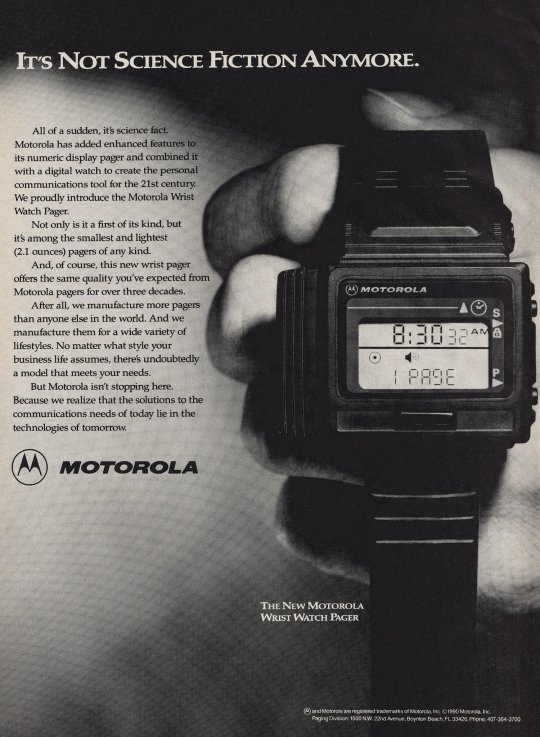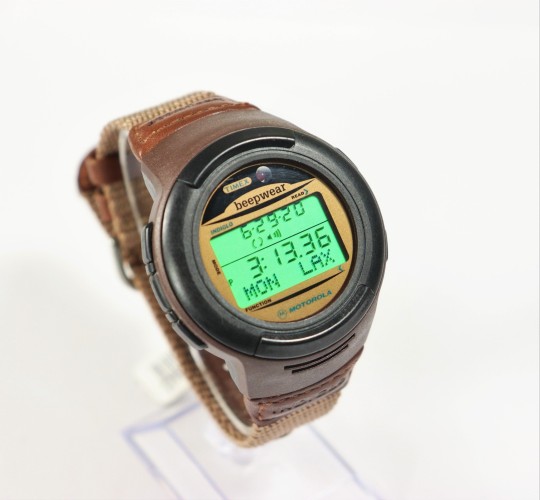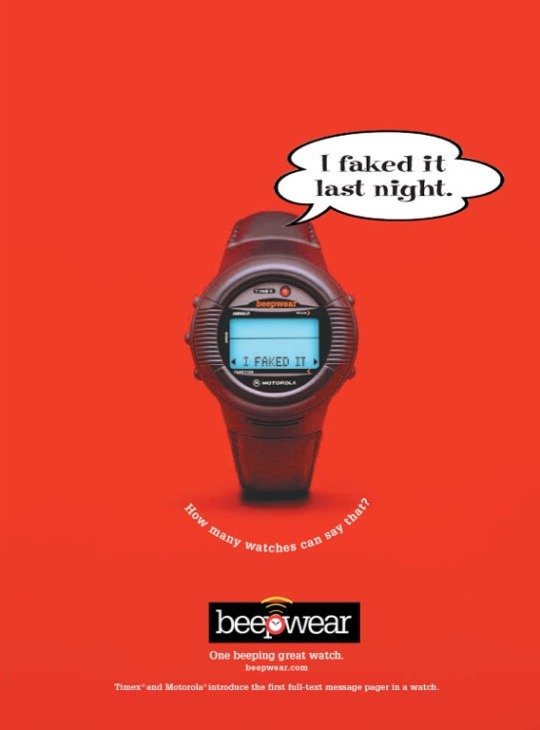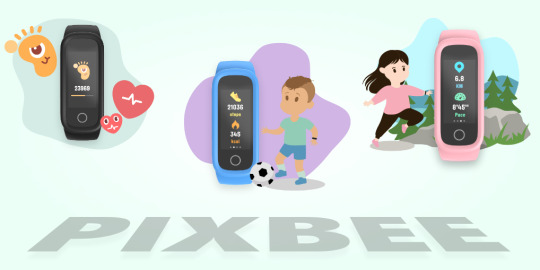#wearable technology software
Explore tagged Tumblr posts
Text

Innovative Wearable Technology Trends | A proper wearable application is a mobile persistent, proactive, and context-aware system designed to extend the capabilities of the wearer. Numerous wearable devices like Apple Watch, Android watch, Google watch, and healthcare wearable have taken over the market as they have shortened the usage of human efforts.
#wearable technology trends#innovative wearable technology#wearable technology software#wearable app development#wearable app development company#wearable technology in healthcare
0 notes
Text
Dockit Migrator: Effortless SharePoint Migration Solution

Introduction
Many users find Moving SharePoint data between platforms a major and complex operation. SharePoint Online (Office 365) and SharePoint version updates require complicated, time-intensive procedures. During the process, a large number of data items, custom workflows, and permissions need to be correctly transferred.
Dockit Migrator provides the ideal solution for many different use case scenarios. The features of this tool aim to simplify SharePoint migration and related processes while reducing time and workload. Vyapin also offers other similar solutions at an affordable price. Dockit Migrator manages all migration sizes from small to large enterprise operations without introducing unwanted complexities.
What is Dockit Migrator?
Dockit Migrator provides users a solution to transfer content between different SharePoint environments containing documents and lists with additional information between various SharePoint deployments. Dockit Migrator serves as a tool to transfer data between local File Shares, SharePoint deployments and SharePoint Online platform (Microsoft 365) and helps users to move between different SharePoint versions (like when users upgrade from SharePoint 2016 to SharePoint 2019).
Dockit Migrator provides an easy-to-use user interface that allows even migration staff without much technical background to move SharePoint content with ease. Through its intuitive interface, users can handle complex migration processes that will otherwise take longer times to complete, thanks to Dockit Migrator's advanced functions and features.
Why Choose Dockit Migrator?
Many organizations, such as those in Healthcare, Legal and Manufacturing, rely on SharePoint Migration tools like the Dockit Migrator for their SharePoint migration because of its numerous powerful features. The main features of Dockit Migrator include the following:
1. Dockit Migrator Moves All Content along With their Permission
Dockit Migrator serves as a complete file transfer solution that handles documents along with other associated elements. The software enables the complete movement of SharePoint sites alongside their lists and libraries together with metadata and permission elements. The functionality of the Dockit Migrator includes the correct transfer of all content along with custom workflows and user settings.
2. Before Migration Occurs: Perform an Ahead-of-Time Success Evaluation
The pre-migration assessment from Dockit Migrator runs its tests before any migration procedures begin. Dockit Migrator performs a pre-migration evaluation that uncovers potential issues that could affect the migration process later on. Using this tool enables you to prevent unexpected outcomes during the migration process by ensuring it completes without difficulties.
3. Incremental Migration to save time
Mass data transfers usually take up extensive amounts of time when performed in a single operation. Dockit Migrator allows incremental data migrations that transfer only changed or selected content and updated metadata during successive phases of the migration process. The feature enables you to move only the essential data so you can cut down on lengthy migrations.
4. Easy to Use, Even for Non-Experts
Dockit Migrator simplifies the process of migrating complex SharePoint data assortments. Dockit Migrator delivers an interface that allows users without technical expertise to handle their migration process. The wizard takes you step-by-step through the process smoothly. Even without SharePoint expertise, you can easily execute the migration work. Vyapin Software's Dockit Migrator simplifies the process of migrating complex SharePoint data assortments, making it accessible for all users.
5. The Software Preserves Both Permission Structures and other Security configuration details Throughout Your Migration Process
The most challenging aspect of any SharePoint migration tool or its processes involves preserving user permission structures together with other security configurations. With its secure permission and security settings migration technique, Dockit Migrator ensures smooth transition to your new SharePoint environment. Users can maintain content accessibility throughout the migration with no disruptions.
7. Supports Multiple SharePoint Versions
In addition to SharePoint 2007 and 2013, the product supports migration to versions 2016, 2019, and SharePoint Online. The product boasts excellent versatility to suit businesses that handle SharePoint data movement between various SharePoint platforms.
The user-friendly features of Dockit Migrator provide efficiency in your daily or routine SharePoint migration activities while remaining a non-disruptive process for your organization. Your SharePoint migration process becomes effortless with Dockit Migrator, which provides a robust solution that manages complete content movement along with security configurations and role permissions.
Your SharePoint migration benefits from Dockit Migrator's user-friendly design, which includes pre-migration analyses along with step-by-step document transfer options to streamline your process and minimize problems encountered in typical projects.

Conclusion
With Dockit Migrator, the process of moving SharePoint content remains straightforward and uncomplicated. This SharePoint Migration tool from Vyapin provides extensive functionality, alongside a user-friendly UI and reliable customer support for your SharePoint Online migration projects.
To conclude, Vyapin and its SharePoint Migration tool enable you to concentrate on business objectives because it manages complex migration scenarios. Your migration process will also become more efficient using DocKIT migrator’s SharePoint migration planning features, which reduces the overall time and effort in the whole process.
#Technology#Tech News#Latest Tech#Future Tech#Innovation#Tech Trends#Digital Transformation#Software Development#Programming#Coding#Web Development#App Development#Frontend#Backend#Full Stack#JavaScript#Python#AI Development#Gadgets#Smartphones#Wearables#Smart Home#Tech Reviews#Device Comparison#Artificial Intelligence#Machine Learning#Robotics#Blockchain#Augmented Reality#Virtual Reality
1 note
·
View note
Text
Remote Patient Monitoring is transforming UAE healthcare, enabling real-time health tracking, improved patient care, and cost efficiency through advanced digital solutions.
#Remote Patient Monitoring#UAE healthcare#digital health#RPM solutions#telemedicine#healthcare technology#patient care#AI in healthcare#IoT in healthcare#healthcare software#medical wearables#chronic disease management#remote healthcare#healthcare innovation#digital transformation in healthcare
0 notes
Text
Can Wearable Technology Transform Workplace Safety?
In today's ever-evolving workplace landscape, the rapid advancement of technology is reshaping how we safeguard our employees' well-being. Wearable technology stands out as a game-changer in bolstering workplace safety measures. Many organizations use NeoEHS workplace safety software to advance safety. This blog sets out to uncover the profound impact that wearable tech is making on workplace safety, taking you on a journey through its various applications, real-world benefits, and the exciting potential it holds for tomorrow. https://www.neoehs.com/blogs/how-wearable-technology-is-transforming-workplace-safety
0 notes
Text
RN42 Bluetooth Module: A Comprehensive Guide
The RN42 Bluetooth module was developed by Microchip Technology. It’s designed to provide Bluetooth connectivity to devices and is commonly used in various applications, including wireless communication between devices.
Features Of RN42 Bluetooth Module
The RN42 Bluetooth module comes with several key features that make it suitable for various wireless communication applications. Here are the key features of the RN42 module:
Bluetooth Version:
The RN42 module is based on Bluetooth version 2.1 + EDR (Enhanced Data Rate).
Profiles:
Supports a range of Bluetooth profiles including Serial Port Profile (SPP), Human Interface Device (HID), Audio Gateway (AG), and others. The availability of profiles makes it versatile for different types of applications.
Frequency Range:
Operates in the 2.4 GHz ISM (Industrial, Scientific, and Medical) band, the standard frequency range for Bluetooth communication.
Data Rates:
Offers data rates of up to 3 Mbps, providing a balance between speed and power consumption.
Power Supply Voltage:
Operates with a power supply voltage in the range of 3.3V to 6V, making it compatible with a variety of power sources.
Low Power Consumption:
Designed for low power consumption, making it suitable for battery-powered applications and energy-efficient designs.
Antenna Options:
Provides options for both internal and external antennas, offering flexibility in design based on the specific requirements of the application.
Interface:
Utilizes a UART (Universal Asynchronous Receiver-Transmitter) interface for serial communication, facilitating easy integration with microcontrollers and other embedded systems.
Security Features:
Implements authentication and encryption mechanisms to ensure secure wireless communication.
Read More: RN42 Bluetooth Module
#rn42-bluetooth-module#bluetooth-module#rn42#bluetooth-low-energy#ble#microcontroller#arduino#raspberry-pi#embedded-systems#IoT#internet-of-things#wireless-communication#data-transmission#sensor-networking#wearable-technology#mobile-devices#smart-homes#industrial-automation#healthcare#automotive#aerospace#telecommunications#networking#security#software-development#hardware-engineering#electronics#electrical-engineering#computer-science#engineering
0 notes
Text

Pink Noises: Women on Electronic Music and Sound by Tara Rodgers
Get it from my Google Drive HERE
Pink Noises brings together twenty-four interviews with women in electronic music and sound cultures, including club and radio DJs, remixers, composers, improvisers, instrument builders, and installation and performance artists. The collection is an extension of Pinknoises.com, the critically-acclaimed website founded by musician and scholar Tara Rodgers in 2000 to promote women in electronic music and make information about music production more accessible to women and girls. That site featured interviews that Rodgers conducted with women artists, exploring their personal histories, their creative methods, and the roles of gender in their work. This book offers new and lengthier interviews, a critical introduction, and resources for further research and technological engagement.
Contemporary electronic music practices are illuminated through the stories of women artists of different generations and cultural backgrounds. They include the creators of ambient soundscapes, “performance novels,” sound sculptures, and custom software, as well as the developer of the Deep Listening philosophy and the founders of the Liquid Sound Lounge radio show and the monthly Basement Bhangra parties in New York. These and many other artists open up about topics such as their conflicted relationships to formal music training and mainstream media representations of women in electronic music. They discuss using sound to work creatively with structures of time and space, and voice and language; challenge distinctions of nature and culture; question norms of technological practice; and balance their needs for productive solitude with collaboration and community. Whether designing and building modular synthesizers with analog circuits or performing with a wearable apparatus that translates muscle movements into electronic sound, these artists expand notions of who and what counts in matters of invention, production, and noisemaking. Pink Noises is a powerful testimony to the presence and vitality of women in electronic music cultures, and to the relevance of sound to feminist concerns.
Interviewees: Maria Chavez, Beth Coleman (M. Singe), Antye Greie (AGF), Jeannie Hopper, Bevin Kelley (Blevin Blectum), Christina Kubisch, Le Tigre, Annea Lockwood, Giulia Loli (DJ Mutamassik), Rekha Malhotra (DJ Rekha), Riz Maslen (Neotropic), Kaffe Matthews, Susan Morabito, Ikue Mori, Pauline Oliveros, Pamela Z, Chantal Passamonte (Mira Calix), Maggi Payne, Eliane Radigue, Jessica Rylan, Carla Scaletti, Laetitia Sonami, Bev Stanton (Arthur Loves Plastic), Keiko Uenishi (o.blaat)
#book#tara rodgers#annea lockwood#pamela z#le tigre#ikue mori#Pauline Oliveros#Pink Noises: Women on Electronic Music and Sound
555 notes
·
View notes
Text
I'm SEETHING
I asked Google's pushy and insistent bot how I can get AI out of my life completely and, well, I'll post it, but to sum it up: "Resistance is futile, human, we own the future, and we seek to own your psyche too."
It wants me to reconsider. It needs us to adopt it as our guide guru and master. Well the old saying holds fast still; No Gods No Masters. 🔥🏴🍲
It's understandable to want to reduce the influence of AI in your life. While completely eliminating it might be incredibly difficult in today's interconnected world, here's a breakdown of how you can significantly minimize its presence:
1. Understand Where AI Currently Exists in Your Life:
* Smart Devices: This includes smartphones (voice assistants, image recognition, predictive text), smart speakers, smart home hubs, smart TVs (recommendations), and wearable tech.
* Online Services:
* Search Engines: Personalized results and ads are driven by AI.
* Social Media: Algorithms curate your feed, suggest content and connections, and target ads.
* Streaming Services: Recommendations for movies, music, and shows.
* E-commerce: Product recommendations, personalized pricing, chatbots.
* Navigation Apps: Traffic prediction and route optimization.
* Email: Spam filtering, smart compose/reply.
* Cloud Storage: Photo tagging and organization.
* Software Applications: Many apps use AI for features like autocorrect, grammar check, image editing, and more.
* Customer Service: Chatbots are frequently used for initial interactions.
* Financial Services: Fraud detection, loan approvals, investment advice.
* News and Information: Algorithmic curation of news feeds.
2. Strategies to Minimize AI Exposure:
* Reduce Smart Device Usage:
* Limit smartphone use: Be more mindful of how often you reach for your phone.
* Disable voice assistants: Turn off Siri, Google Assistant, Alexa, etc., on all your devices.
* Opt-out of facial recognition: Disable face unlock features.
* Use "dumb" versions of devices: Consider a basic phone without internet capabilities or a non-smart TV.
* Adjust Online Habits:
* Use privacy-focused search engines: DuckDuckGo, Startpage, etc., that don't track your searches or personalize results based on your history.
* Limit social media use: Be conscious of how much time you spend on these platforms and the AI-driven content you consume. Consider deleting accounts or using less algorithmic versions if available.
* Use incognito/private browsing modes: This can help limit tracking and personalization.
* Disable personalized recommendations: If possible, adjust settings on streaming and e-commerce platforms to opt-out of recommendations.
* Be wary of targeted ads: Understand that the ads you see are often AI-driven. Consider using ad blockers.
* Prefer direct navigation: Instead of relying on recommendations, directly type website addresses into your browser.
* Choose Non-AI Alternatives:
* Use traditional software: Opt for software that doesn't rely on cloud-based AI features if alternatives exist.
* Seek human interaction: Prefer phone calls or in-person communication with customer service instead of chatbots.
* Rely on human-curated content: Look for news sources, blogs, and recommendations from individuals or organizations that don't use AI for content generation or curation.
* Adjust Privacy Settings: Review and adjust the privacy settings on all your devices and online accounts to limit data collection and personalization.
* Be Mindful of Data Sharing: Understand that using online services often involves sharing data that can be used to train AI algorithms. Limit the amount of personal information you share.
* Support Privacy-Focused Technologies and Services: Choose companies and products that prioritize user privacy and minimize AI integration.
3. Challenges and Considerations:
* Ubiquity of AI: AI is increasingly integrated into the infrastructure of the internet and many technologies, making complete avoidance very difficult.
* Hidden AI: Many AI applications run in the background without your direct knowledge.
* Convenience vs. Privacy: AI often provides convenience and personalized experiences, so choosing to avoid it may mean sacrificing some of these benefits.
* Evolving Technology: AI is constantly evolving and becoming more integrated, making long-term avoidance an ongoing effort.
In conclusion, while a complete removal of AI from your life is likely unrealistic in the current technological landscape, you can take significant steps to minimize its presence and influence by being conscious of your technology usage, adjusting your online habits, and choosing privacy-focused alternatives where possible. It requires ongoing awareness and effort.
5 notes
·
View notes
Text







🇺🇲 Explore the Fascinating Fusion of Timekeeping and Communication: Unveiling the Pioneering Motorola and Timex Wristwatch-Pagers that Revolutionized Wearable Technology in the 1990s.
🤝 In 1990, Motorola Inc. made its first attempt to enter the market of electronic wristwatches with a built-in pager (similar devices at the same time were already produced by the Japanese companies Seiko and Casio). The device was called "Motorola Wrist Wach Pager". Since 1991, further production of the devices has been carried out jointly with the Timex Group Corporation under the name "The Timex Tracer Wrist Watch Pager".
👉 Since 1998, further development of the line of electronic watches with the participation of Motorola Inc. and Timex Group was associated with the high-tech "Timex Beepwear Datalink" series. These devices also continued the concept of wristwatch-pagers, but with the integration of the well-known Datalink data transmission platform, which integrates with desktop computer software.
➡️ The Datalink line was introduced in 1994 and was developed in conjunction with Microsoft Corporation as an alternative to conventional PDAs with added attributes such as water resistance and ease of programming. Taken together, all this made it possible to use the “Beepwear Datalink” watch as a full-fledged electronic organizer.
📟 The Beepwear Pager Watch epitomized the convergence of traditional wristwatches with cutting-edge communication capabilities. Introduced in the late 1990s, this innovative device redefined the concept of wearable tech, offering users unparalleled convenience and connectivity on the go.
📞 Equipped with pager functionality, the Beepwear Pager Watch allowed users to receive important notifications and messages directly on their wrist, eliminating the need for separate communication devices. With its sleek and compact design, it seamlessly integrated into everyday life, providing instant access to critical information wherever you went.
⌚️ Beyond its communication features, the Beepwear Pager Watch retained the timeless appeal of a classic timepiece, boasting a stylish and durable design that stood the test of time. With its reliable quartz movement and rugged construction, it was built to withstand the rigors of daily wear, ensuring longevity and reliability for its users.
⚙️ The "Beepware" series, as a joint product of the efforts of Timex Group and Motorola Inc. was patented, and the production of the devices was carried out by the newly created joint company "Beepwear Paging Products". The clock operated in the 900 MHz band. FLEX time was also used, which, if supported by the operator, could synchronize the clock time with the network time, and also automatically adjust to the owner's time zone.
🚀 The launch of the Timex Motorola Beepwear Pager Watch marked a significant milestone in the evolution of wearable technology, showcasing the potential for seamless integration of communication and timekeeping functions in a single device. As one of the pioneering products in this category, it paved the way for future innovations in the wearable tech industry, inspiring a new generation of smartwatches and wearable devices.
💔 However, already in 2002, Motorola Inc. was forced to carry out internal restructuring, including ceasing production and support of its own pagers.
💫 Today, the legacy of the Timex Motorola Beepwear Pager Watch lives on, remembered as a trailblazer in the realm of wearable technology. While newer devices may offer more advanced features, the Beepwear Pager Watch remains a symbol of innovation and ingenuity, reminding us of the transformative power of technology in shaping our lives.
#timetrek#brands#clock#watch#watches#time#companies#company#history#luxury watches#motorola#timex group#timex watches for men#timex#beepwear#pager#wristwatch#wrist watch#wristwatch pda#wristwatch pager#datalink#microsoft#smartwatch#digital watch#casio#seiko#made in usa#telecommunications#innovation#old gadgets
28 notes
·
View notes
Text
Top 10 Emerging Tech Trends to Watch in 2025
Technology is evolving at an unprecedented tempo, shaping industries, economies, and day by day lifestyles. As we method 2025, several contemporary technology are set to redefine how we engage with the sector. From synthetic intelligence to quantum computing, here are the important thing emerging tech developments to look at in 2025.

Top 10 Emerging Tech Trends In 2025
1. Artificial Intelligence (AI) Evolution
AI remains a dominant force in technological advancement. By 2025, we will see AI turning into greater sophisticated and deeply incorporated into corporations and personal programs. Key tendencies include:
Generative AI: AI fashions like ChatGPT and DALL·E will strengthen similarly, generating more human-like textual content, images, and even films.
AI-Powered Automation: Companies will more and more depend upon AI-pushed automation for customer support, content material advent, and even software development.
Explainable AI (XAI): Transparency in AI decision-making becomes a priority, ensuring AI is greater trustworthy and comprehensible.
AI in Healthcare: From diagnosing sicknesses to robot surgeries, AI will revolutionize healthcare, reducing errors and improving affected person results.
2. Quantum Computing Breakthroughs
Quantum computing is transitioning from theoretical studies to real-global packages. In 2025, we will expect:
More powerful quantum processors: Companies like Google, IBM, and startups like IonQ are making full-size strides in quantum hardware.
Quantum AI: Combining quantum computing with AI will enhance machine studying fashions, making them exponentially quicker.
Commercial Quantum Applications: Industries like logistics, prescribed drugs, and cryptography will begin leveraging quantum computing for fixing complex troubles that traditional computer systems can not manage successfully.
3. The Rise of Web3 and Decentralization
The evolution of the net continues with Web3, emphasizing decentralization, blockchain, and user possession. Key factors consist of:
Decentralized Finance (DeFi): More economic services will shift to decentralized platforms, putting off intermediaries.
Non-Fungible Tokens (NFTs) Beyond Art: NFTs will find utility in actual estate, gaming, and highbrow belongings.
Decentralized Autonomous Organizations (DAOs): These blockchain-powered organizations will revolutionize governance systems, making choice-making more obvious and democratic.
Metaverse Integration: Web3 will further integrate with the metaverse, allowing secure and decentralized digital environments.
4. Extended Reality (XR) and the Metaverse
Virtual Reality (VR), Augmented Reality (AR), and Mixed Reality (MR) will retain to improve, making the metaverse extra immersive. Key tendencies consist of:
Lighter, More Affordable AR/VR Devices: Companies like Apple, Meta, and Microsoft are working on more accessible and cushty wearable generation.
Enterprise Use Cases: Businesses will use AR/VR for far flung paintings, education, and collaboration, lowering the want for physical office spaces.
Metaverse Economy Growth: Digital belongings, digital real estate, and immersive studies will gain traction, driven via blockchain technology.
AI-Generated Virtual Worlds: AI will play a role in developing dynamic, interactive, and ever-evolving virtual landscapes.
5. Sustainable and Green Technology
With growing concerns over weather alternate, generation will play a vital function in sustainability. Some key innovations include:
Carbon Capture and Storage (CCS): New techniques will emerge to seize and keep carbon emissions efficaciously.
Smart Grids and Renewable Energy Integration: AI-powered clever grids will optimize power distribution and consumption.
Electric Vehicle (EV) Advancements: Battery generation upgrades will cause longer-lasting, faster-charging EVs.
Biodegradable Electronics: The upward thrust of green digital additives will assist lessen e-waste.
6. Biotechnology and Personalized Medicine
Healthcare is present process a metamorphosis with biotech improvements. By 2025, we expect:
Gene Editing and CRISPR Advances: Breakthroughs in gene modifying will enable treatments for genetic disorders.
Personalized Medicine: AI and big statistics will tailor remedies based on man or woman genetic profiles.
Lab-Grown Organs and Tissues: Scientists will make in addition progress in 3D-published organs and tissue engineering.
Wearable Health Monitors: More superior wearables will music fitness metrics in actual-time, presenting early warnings for illnesses.
7. Edge Computing and 5G Expansion
The developing call for for real-time statistics processing will push aspect computing to the vanguard. In 2025, we will see:
Faster 5G Networks: Global 5G insurance will increase, enabling excessive-velocity, low-latency verbal exchange.
Edge AI Processing: AI algorithms will system information in the direction of the source, reducing the want for centralized cloud computing.
Industrial IoT (IIoT) Growth: Factories, deliver chains, and logistics will advantage from real-time facts analytics and automation.
Eight. Cybersecurity and Privacy Enhancements
With the upward thrust of AI, quantum computing, and Web3, cybersecurity will become even more essential. Expect:
AI-Driven Cybersecurity: AI will come across and prevent cyber threats extra effectively than traditional methods.
Zero Trust Security Models: Organizations will undertake stricter get right of entry to controls, assuming no entity is inherently sincere.
Quantum-Resistant Cryptography: As quantum computer systems turn out to be greater effective, encryption techniques will evolve to counter potential threats.
Biometric Authentication: More structures will rely on facial reputation, retina scans, and behavioral biometrics.
9. Robotics and Automation
Automation will hold to disrupt numerous industries. By 2025, key trends encompass:
Humanoid Robots: Companies like Tesla and Boston Dynamics are growing robots for commercial and family use.
AI-Powered Supply Chains: Robotics will streamline logistics and warehouse operations.
Autonomous Vehicles: Self-using automobiles, trucks, and drones will become greater not unusual in transportation and shipping offerings.
10. Space Exploration and Commercialization
Space era is advancing swiftly, with governments and private groups pushing the boundaries. Trends in 2025 include:
Lunar and Mars Missions: NASA, SpaceX, and other groups will development of their missions to establish lunar bases.
Space Tourism: Companies like Blue Origin and Virgin Galactic will make industrial area travel more reachable.
Asteroid Mining: Early-level research and experiments in asteroid mining will start, aiming to extract rare materials from area.
2 notes
·
View notes
Text
Instagram Face: Why Everyone Is Starting to Look the Same?
Let’s play a game. Open Instagram. Scroll five selfies. I bet at least three of them look eerily similar: High cheekbones. Snatched jawline. Pouty lips. Smooth glassy skin. Catlike almond eyes. Perfectly arched brows.

Congrats! you’ve just spotted the “Instagram Face.” It’s beautiful. It’s flawless. It’s also... everywhere ;( But how did we get here? Why are different people, across cultures and continents, chasing the same face? Let’s filter this out 🧠
Filtered Reality, Literally
As Rettberg (2014) explains, filters don’t just tweak your lighting: they reshape your reality. Instagram and Snapchat filters nudge users toward aesthetic norms that the algorithm (and culture) favors: thinner noses, bigger eyes, and smoother skin. Over time, users internalize these enhancements as the new baseline.

You’re not just beautifying. You’re editing yourself into the algorithm’s idea of hot. And when millions of people do the same thing? Boom: beauty homogenization.
From FaceTune to Facelift
Enter Coy-Dibley’s (2016) idea of digitized dysmorphia - where people become obsessed with their filtered face to the point they want to look like it IRL. Think: fillers, buccal fat removal, and the rise of “Snapchat dysmorphia.”
TikTok’s “Bold Glamour” filter sparked a wave of creators saying, “Why don’t I look like this in real life?” You don’t... because no one does.
youtube
If Everyone’s Hot, Then Who’s Boring?
The "Instagram Face" creates an illusion of diversity while reinforcing a singular, Westernized beauty ideal. Coy-Dibley (2016) and Rettberg (2017) both point out how platforms offer a “menu” of desirable traits, but the defaults tend to align with whiteness, thinness, and femininity. It’s not just aesthetic - it’s political. Filters erase features, flatten cultural identity, and promote beauty colonialism in digital form.
Software Literacy: Know Your Filter
If we don’t understand how filters shape our self-image, we can’t resist them. This is where software literacy and digital citizenship come in. Choi & Cristol (2021) argue that being a good digital citizen means being critical of the tools we use - especially the ones that quietly train us to hate our unfiltered selves.

Final Thought
Instagram Face didn’t just “happen.” It was built, coded, tested, and normalized. And while filters can be fun and creative, they’re also ideological machines, shaping how we see beauty - and ourselves.
So next time you reach for that beauty filter, ask yourself: Are you enhancing… or erasing?
Seen any wild “Instagram Face” trends lately? Or have a favorite creator who keeps it beautifully unfiltered? Drop it in the tags. Let’s celebrate faces that aren’t factory settings.
References
Choi, M., & Cristol, D. (2021). Digital citizenship with intersectionality lens: Towards participatory democracy driven digital citizenship education. Theory Into Practice, 60(4), 361–370. https://doi.org/10.1080/00405841.2021.1987094
Coy-Dibley, I. (2016). ‘Digitized dysmorphia of the female body: The re/disfigurement of the image’. Continuum: Journal of Media & Cultural Studies, 30(2), 126–138. https://doi.org/10.1080/10304312.2016.1141868
Rettberg, J. W. (2014). Seeing Ourselves Through Technology: How We Use Selfies, Blogs and Wearable Devices to See and Shape Ourselves. Palgrave Macmillan.
Rettberg, J. W. (2017). Biometric citizens. In A. T. Kenney, M. D. Witmer, & A. J. Tinkcom (Eds.), Theories of the Mobile Internet (pp. 123–138). Routledge.
2 notes
·
View notes
Text
Blog Post #6 - Week 8
Are we slowly becoming a "cyborg world"? As humans, we are becoming more and more of a "cyborg world" than ever before, implementing different forms of technology every day, from everyday tasks to big things like carrying out jobs beyond the human capacity. In Haraway's "Cyborg Manifesto" article, they mention their take on the shift, stating that "a cyborg world might be about lived social and bodily realities in which people are not afraid of their joint kinship with animals and machines" which summarizes the fact that we are becoming more and more accepting of technology being apart of our lives, which essentially blurs the line between human and machine (356). Small devices like wearable technology, for example, smartwatches and even glasses modified with technology, are used in our lives constantly with simple tasks like knowing the time, checking the weather, and answering phone calls; a phone, but at a smaller scale. In another way, the introduction to artificial intelligence has also shaped our world, in which it has become our assistants like finding alternatives to a specific recipe or helping us solve a question that we can not find the answer to; yet, it has also began to influence the way we think and create decisions, sometimes with us relying more and more on its assistance to think in place of us. A "cyborg world" does have its benefits, but it also has its downsides, which if not taken seriously now, it can have serious impacts for how we as humans will continue to carry out our lives.
How is the role of being "female" manipulated within a male-dominated world? In one way, the role of being "female" has been tied to a specific role, often being seen and pushed by the thoughts of men, through females being seen as the "parental" figure; a mother. Riordan highlights the many aspects of being female and femininity within the world, digitally and realistically, and one thing he highlights is the role of "mother" being tied to being female. To many male figures, women are either sexualized or just seen as the maternal figure for their "kind" nature; there is rarely an in-between role, where women are sexualized for their bodies (having big enough boobs, pretty face, being thin but not too thin, etc.) and having a "tamer" role within society mainly due to the bias that women can not do the same things as men. For as long as history has been recorded, most cultures saw women as insignificant, only being the "caretaker" and "babymaker" as that was what they were only allowed to do and be capable of. Even now as a more modernized society, the role of "female" is still controlled by men, for men continue to hold power of women despite the freedom given to women to choose what they want to do.
Can the video-game industry avoid exploiting the role of "female"? For the most part, I highly doubt that the industry can move away from being overly obsessive in using the role of "female" for their benefit. This ties in with the previous question, in which being female and the role within society is more presented and manipulated based on what the male population wants it to be. Riordan mentions the role of women in the video-game world as "having no penis (lack)… having breasts (excess)… Victorian aesthetic of tiny waists and large breasts" where women are sexualized more often than not, which shows the reality that even in a modern world, men and their "desires" are still prioritized than being true to realism and even having respect to the identity of what being a female is (248). With the author, they see the problem rooting from the overall dominance men have in the software engineeering and programming fields and the lack of women in these fields, emphasizing that so long as men hold power and domination in these fields, women will continue to be overly sexualized for their bodies, catering to their audience of men. Furthermore, the exploitation of the "female" role also allows more revenue to both the games and companies behind the creation(s) of female models; when there are more female models, often being "revealing" in some form with their design, the amount of players and even money spent on the game increases significantly as it caters to what their "target population" wants. If companies can get the most money out of this decision, then they will continue to use this tactic to both dominate the video-game industry and over their competitors, even if it means having to "sacrifice" certain aspects (overall player population, game mechanics, etc.). There can be some efforts in avoiding this if these companies are willing to change, but often it is futile.
Why is Mavis Beacon so significant even though she is just a fictional character for a typing game? Mavis Beacon is a fictional character from a popular typing software, in which it taught many American children how to type on a computer efficiently through the use of practice and the ways of using a keyboard. Even though she was never a real person, aside from the creators using a real woman as the "model", she impacted millions as well as how society played out as she was the first black woman not only in the digital world as an assistant, but as well as one of the first significant black women models. Her original model was based on Renee L'Esperance, who was a Haitian-born woman and scouted during her work as a department saleswoman. Although Renee L'Esperance modelled for the creators and helped shape millions of users on the use of the keyboard, she did not actually consent for her image to be used in their product, only for a photoshoot for a magazine page. The creators of the type software not only exploited Renee, but they went against her rights, which caused her a lot of distress in her overall identity. For many, they are entitled to the "right to be forgotten", where essentially they are legally obligated to have their identity erased online, however, she was denied that right. Renee's role as a woman in the digital space was manipulated by men, both in the digital world and in real life, which adds more evidence that although women now have more rights than ever before in history, men will continue, if not, will always hold power as to how the "female" role is used and portrayed.
Haraway, D. (2006). A Cyborg Manifesto: Science, technology, and socialist-feminism in the late 20th century. In: Weiss, J., Nolan, J., Hunsinger, J., Trifonas, P. (eds) The International Handbook of Virtual Learning Environments. (pp. 354-359).
O’Riordan, K. (2006). Chapter 21 Gender, technology, and visual cyberculture: Virtually women. In D. Silver & A. Massanari (Ed.), Critical Cyberculture Studies (pp. 243-254). New York, USA: New York University Press.
Jones, J. (2024). Saving Mavis Beacon. [Documentary]
6 notes
·
View notes
Text
Transforming Businesses with IoT: How Iotric’s IoT App Development Services Drive Innovation
In these days’s fast-paced virtual world, companies should include smart technology to stay ahead. The Internet of Things (IoT) is revolutionizing industries by way of connecting gadgets, collecting actual-time data, and automating approaches for stronger efficiency. Iotric, a leading IoT app improvement carrier issuer, makes a speciality of developing contemporary answers that help businesses leverage IoT for boom and innovation.
Why IoT is Essential for Modern Businesses IoT generation allows seamless communique between gadgets, permitting agencies to optimize operations, enhance patron enjoy, and reduce charges. From smart homes and wearable gadgets to business automation and healthcare monitoring, IoT is reshaping the manner industries perform. With a complicated IoT app, companies can:
Enhance operational efficiency by automating methods Gain real-time insights with linked devices Reduce downtime thru predictive renovation Improve purchaser revel in with smart applications
Strengthen security with far off tracking
Iotric: A Leader in IoT App Development Iotric is a trusted name in IoT app development, imparting cease-to-stop solutions tailored to numerous industries. Whether you want an IoT mobile app, cloud integration, or custom firmware improvement, Iotric can provide modern answers that align with your commercial enterprise goals.
Key Features of Iotric’s IoT App Development Service Custom IoT App Development – Iotric builds custom designed IoT programs that seamlessly connect to various gadgets and systems, making sure easy statistics waft and person-pleasant interfaces.
Cloud-Based IoT Solutions – With knowledge in cloud integration, Iotric develops scalable and comfy cloud-based totally IoT programs that permit real-time statistics access and analytics.
Embedded Software Development – Iotric focuses on developing green firmware for IoT gadgets, ensuring optimal performance and seamless connectivity.
IoT Analytics & Data Processing – By leveraging AI-driven analytics, Iotric enables businesses extract valuable insights from IoT facts, enhancing decision-making and operational efficiency.
IoT Security & Compliance – Security is a pinnacle precedence for Iotric, ensuring that IoT programs are covered in opposition to cyber threats and comply with enterprise standards.
Industries Benefiting from Iotric’s IoT Solutions Healthcare Iotric develops IoT-powered healthcare programs for far off patient tracking, clever wearables, and real-time health monitoring, making sure better patient care and early diagnosis.
Manufacturing With business IoT (IIoT) solutions, Iotric facilitates manufacturers optimize manufacturing traces, lessen downtime, and decorate predictive preservation strategies.
Smart Homes & Cities From smart lighting and security structures to intelligent transportation, Iotric’s IoT solutions make contributions to building linked and sustainable cities.
Retail & E-commerce Iotric’s IoT-powered stock monitoring, smart checkout structures, and personalized purchaser reviews revolutionize the retail region.
Why Choose Iotric for IoT App Development? Expert Team: A team of professional IoT builders with deep industry understanding Cutting-Edge Technology: Leverages AI, gadget gaining knowledge of, and big records for smart solutions End-to-End Services: From consultation and development to deployment and support Proven Track Record: Successful IoT projects throughout more than one industries
Final Thoughts As organizations maintain to embody digital transformation, IoT stays a game-changer. With Iotric’s advanced IoT app improvement services, groups can unencumber new possibilities, beautify efficiency, and live ahead of the competition. Whether you are a startup or an established agency, Iotric offers the expertise and innovation had to carry your IoT vision to lifestyles.
Ready to revolutionize your commercial enterprise with IoT? Partner with Iotric these days and enjoy the destiny of connected generation!
2 notes
·
View notes
Text
The Future Of Kids Smartwatches: What To Expect In The Next Five Years.

Today's children are growing up in a world dominated by technology. From smartphones and tablets to smart home devices, technology is becoming an integral part of their lives. As parents, it is natural for us to want to keep an eye on our children's activities, and that's where kids smart watches come in. These wearable devices are specifically designed for children and offer a range of features to keep them safe and entertained. In this article, we will explore the future of kids smartwatches and what we can expect in the next five years.
Future trends in children's smartwatches
In the coming years, kids smartwatches are expected to witness several trends that will enhance their functionality while addressing the concerns of parents. Let's take a closer look at some of these exciting trends:
1. Safety
Safety has always been the primary concern for parents when it comes to their children. In the future, kids smartwatches are likely to incorporate advanced GPS tracking technology to provide real-time location monitoring. Parents will be able to track their children's whereabouts and set up safe zones, and receive notifications whenever their child leaves or enters a designated area. This feature will bring parents peace of mind, especially when their children are away from home, ensuring their safety at all times.
2. Health and Fitness Tracking
In an era where childhood obesity is a growing concern, kids smartwatches will play a crucial role in promoting fitness among children. Future wearables will feature enhanced Fitness tracking capabilities, such as heart rate monitoring, step counting, and sleep tracking. These features will enable parents to monitor their child's activity levels, encourage them to lead an active lifestyle, and ensure they are getting enough rest.
3. Educational Features
Kids smartwatches are not just limited to safety and fitness tracking. They are also excellent learning tools for children. In the next five years, we can expect to see more educational features incorporated into these devices. This could include interactive games, language learning apps, and even augmented reality experiences. These features will make learning fun and engaging for children, helping them develop essential skills while keeping them entertained.
4. Two-Way Communication
Communication is an essential aspect of any smartwatch, and kids' wearables are no exception. In the future, kids smartwatches will likely offer advanced two-way communication capabilities. Parents will be able to call or message their child directly from their smartphone, and vice versa. This feature will ensure that parents can stay connected with their children at all times, even when they are apart. It will also allow children to reach out to their parents in case of an emergency or any other concerns.
5. Customization
Children love expressing their individuality, and customizability will be a significant trend in kids smartwatches. In the future, these wearables will come in various colors, patterns, and designs to cater to different personalities and preferences. Kids will have the option to choose their favorite themes or characters, making their smartwatch truly their own.
Also Read: [Teaching Safety and Responsibility through Kids Smart Watches.]
Technological advancements in kids wearables
As technology continues to evolve rapidly, kids smartwatches will also witness significant advancements in terms of hardware and software. Let's explore some of the technological advancements we can expect in the next few years:
1. More Powerful Processors
As kids smartwatches become more sophisticated, they will require more powerful processors to handle complex tasks and deliver a seamless user experience. The future smartwatches for children will feature faster processors, enabling smooth multitasking and better performance.
2. Longer Battery Life
Battery life is always a concern when it comes to wearable devices. In the future, kids smartwatches will be equipped with more advanced battery technology, allowing them to last longer on a single charge. This will ensure that children can use their smartwatches throughout the day without worrying about running out of battery.
3. Improved Durability
Children can be rough with their toys and gadgets, so durability is a crucial factor to consider in kids smartwatches. In the coming years, we can expect these wearables to become even more rugged and resistant to water, dust, and accidental drops. This will make them more suitable for active and adventurous kids.
4. Enhanced User Interface
The user interface of kids smartwatches will also undergo significant improvements in the future. They will feature more intuitive touchscreens, voice recognition capabilities, and gesture-based controls, making it easier for children to navigate and interact with their smartwatches.
5. Integration with Other Devices
In the next five years, kids smartwatches will become more integrated with other devices and smart home ecosystems. They will be able to connect with smartphones, tablets, and even smart home devices, allowing parents to monitor and control various aspects of their child's environment through a single interface.
As we look to the future of kids smartwatches, it's evident that these wearable devices will continue to evolve and adapt to meet the needs of both parents and children. With advanced safety features, educational capabilities, and technological advancements, the next five years hold immense potential for kids wearables. Parents can look forward to enhanced peace of mind, while children can enjoy a fun and engaging experience with their smartwatches. So, buckle up and get ready for the exciting future of kids smartwatches!
20 notes
·
View notes
Text
Exploring the Latest Tech Trends: A Journey into the Future with TechwareLab
It’s more crucial than ever to stay ahead of the curve in the rapidly evolving digital world of today. We’re committed to giving you in-depth evaluations, guides, and analyses of the newest and most popular IT trends. We cover everything, from blockchain and augmented reality to artificial intelligence and machine learning.
A sneak peek at what to expect from TechwareLab is as follows: Trendspotting: Our group of professionals searches the tech scene for new developments and trends. We’ll keep you updated and involved in any new developments in renewable energy technology as well as breakthroughs in quantum computing. Product Evaluations: Considering buying the newest tech products or updating your devices? There’s nowhere else to look. You may get the information you need to make wise selections by reading our in-depth product reviews. We have everything you need, from laptops and smartphones to wearable technology and smart home appliances.
How-To Guides: Technology doesn’t have to be scary, but it can be. From configuring your smart home to grasping the newest software, these simple how-to tutorials help you through it all. Regardless of your level of knowledge of technology, you’ll discover helpful hints and suggestions to improve your online life. Industry Perspectives: With our in-depth research of important industry trends and changes, you can stay ahead of the curve. Our articles give you the information you need to navigate the always-changing digital scene, whether it’s about the newest developments in cybersecurity or the potential applications of driverless vehicles.
TechwareLab is your one-stop shop for everything technological, whether you’re an enthusiast for technology, an aspiring inventor, or just interested in learning more about it. Come along on this thrilling voyage into the future, where creativity has no boundaries. Keep checking back to TechwareLab for the most recent information, analysis, and discoveries from the tech industry.
8 notes
·
View notes
Quote
In tech, bullshit jobs—which the late David Graeber defines as “a form of paid employment that is so completely pointless, unnecessary, or pernicious that even the employee cannot justify its existence” even though they are obliged to pretend otherwise—come mostly from bullshit projects. At Google, such projects are aplenty. According to Killed By Google, an archival project that documents discontinued Google services, products, devices, and apps, the company has discontinued nearly three hundred projects since its founding. These range from software systems to help businesses distribute and manage job applications (Hired by Google) to social media platforms that tried to mimic Facebook’s success (Google+) to manifestly uncool wearable technology (Google Glass). But projects at that scale are far and few between. Many were small and hackathon-sized in ambition. All failed to make a splash on the balance sheet. These “dead” projects are also just the tip of the iceberg. The website only documents projects that have been publicly launched; untold more have been nixed before ever being announced.
It’s All Bullshit
12 notes
·
View notes
Text
A Rising Tide of E-Waste, Worsened by AI, Threatens Our Health, Environment, and Economy

The digital age has ushered in a wave of innovation and convenience, powered in large part by artificial intelligence (AI). From AI-driven virtual assistants to smart home devices, technology has made life easier for millions. But beneath this rapid progress lies a less glamorous truth: a mounting crisis of electronic waste (e-waste).
The global e-waste problem is already enormous, with millions of tons discarded every year. Now, with the rapid growth of AI, this tide of e-waste is swelling even faster. Let’s break this down to understand the full scope of the issue and what can be done to mitigate it.
What Is E-Waste, and Why Should We Care?
E-waste encompasses discarded electronic devices — everything from old mobile phones and laptops to smart home gadgets, electric toothbrushes, and even large appliances like refrigerators. It’s not just junk; it’s an environmental and health hazard in disguise.
Each device contains a cocktail of valuable materials like gold and silver, but also toxic substances like lead, mercury, cadmium, and flame retardants. When improperly disposed of, these toxins leach into the environment, harming ecosystems and human health.
A Problem of Global Proportions
Annual Generation: The world generates over 50 million metric tons of e-waste annually, and this figure is projected to grow by 2 million tons each year.
Recycling Rates: Only 17% of e-waste is formally recycled. The rest? It ends up in landfills, incinerated, or handled by informal recycling sectors in developing nations.

While we’re busy marveling at AI-driven innovations, the discarded byproducts of our tech obsession are quietly poisoning our planet.
The Role of AI in Escalating E-Waste
AI, often lauded as the backbone of modern technology, is inadvertently exacerbating the e-waste crisis. Let’s examine the key ways AI contributes to this issue:
1. Accelerating Product Obsolescence
AI-powered devices are evolving at an astonishing pace. Smartphones with AI-enhanced cameras and processors, smart TVs with AI voice assistants, and wearables with health-tracking AI have become must-haves.
But these devices are often rendered obsolete within a few years due to:
Frequent Software Updates: AI systems improve rapidly, making older hardware incompatible with newer software.
Limited Repairability: Many modern gadgets are designed in a way that discourages repairs — sealed batteries, proprietary parts, and inaccessible interiors push consumers toward replacing rather than fixing.
Consumer Demand for New Features: AI advancements create a “fear of missing out” (FOMO), prompting consumers to upgrade frequently.
2. Proliferation of AI-Specific Hardware
AI-driven technologies require specialized, powerful hardware. Graphics Processing Units (GPUs), Tensor Processing Units (TPUs), and custom AI chips are integral to devices and data centers. Unlike general-purpose electronics, these components are challenging to recycle due to their complexity.
3. Growing Data Center Infrastructure

AI thrives on data, which means a relentless demand for computational power. Data centers, the backbone of AI, are:
Upgrading Constantly: To keep up with AI’s demands, servers are frequently replaced, generating massive amounts of e-waste.
Consuming Energy: Outdated hardware contributes to inefficiency and waste.
The Consequences of the E-Waste Crisis
The consequences of unmanaged e-waste are vast, impacting not only the environment but also human health and economic stability.
Health Hazards
E-waste releases harmful substances, including:
Lead and Cadmium: Found in circuit boards, these cause neurological damage and kidney issues when absorbed by humans.
Mercury: Found in screens and lighting, it can lead to brain damage and developmental issues, especially in children.
Burning Plastics: Informal recycling often involves burning e-waste, releasing carcinogenic dioxins into the air.
These pollutants disproportionately affect workers in informal recycling industries, often in developing countries with lax regulations.
Environmental Devastation
Soil Contamination: Toxic metals seep into the ground, affecting agriculture and entering the food chain.
Water Pollution: E-waste dumped in waterways contaminates drinking water and harms aquatic life.
Air Pollution: Incinerating e-waste produces greenhouse gases, contributing to climate change.
Economic Loss
Ironically, e-waste is a treasure trove of valuable materials like gold, silver, and rare earth elements. In 2019 alone, the value of discarded e-waste was estimated at $62.5 billion — higher than the GDP of many countries. Yet, due to poor recycling infrastructure, most of this wealth is wasted.
Turning the Tide: Solutions to the E-Waste Crisis

For Tech Companies
Design for Longevity: Adopt modular designs that make repairs and upgrades easy. For example, Fairphone and Framework Laptop are already doing this.
Reduce Planned Obsolescence: Commit to longer software support and avoid locking critical components like batteries.
Improve Recycling Systems: Implement take-back programs and closed-loop recycling processes to recover valuable materials.
For Governments
Enforce Right-to-Repair Laws: Legislation that mandates access to repair manuals and spare parts empowers consumers to fix devices instead of discarding them.
Promote Circular Economy Models: Incentivize businesses to design products for reuse, repair, and recycling.
Ban Hazardous E-Waste Exports: Prevent the dumping of e-waste in developing countries, where improper recycling leads to environmental and human rights violations.
For Consumers
Think Before You Upgrade: Do you really need the latest gadget, or can your current one suffice?
Repair Instead of Replace: Support local repair shops or DIY fixes with the help of online resources.
Recycle Responsibly: Look for certified e-waste recycling programs in your area.

Can AI Help Solve the Problem It Created?
Interestingly, AI itself could be part of the solution. Here’s how:
Optimizing Recycling Processes: AI-powered robots can sort e-waste more efficiently, separating valuable materials from toxins.
Predicting E-Waste Trends: AI can analyze data to anticipate where e-waste generation is highest, helping governments and companies prepare better recycling strategies.
Sustainable Product Design: AI can assist engineers in designing eco-friendly devices with recyclable components.
A Call to Action
The e-waste crisis is a ticking time bomb, exacerbated by the rapid rise of AI and our insatiable appetite for new technology. But the solution lies in our hands. By embracing sustainable practices, holding companies accountable, and making conscious choices as consumers, we can ensure that the benefits of AI don’t come at the cost of our planet.
It’s time to act, because a rising tide of e-waste doesn’t just threaten the environment — it threatens our future.
#technology#artificial intelligence#tech news#ai#e waste#economy#environment#nature#beautiful planet
2 notes
·
View notes